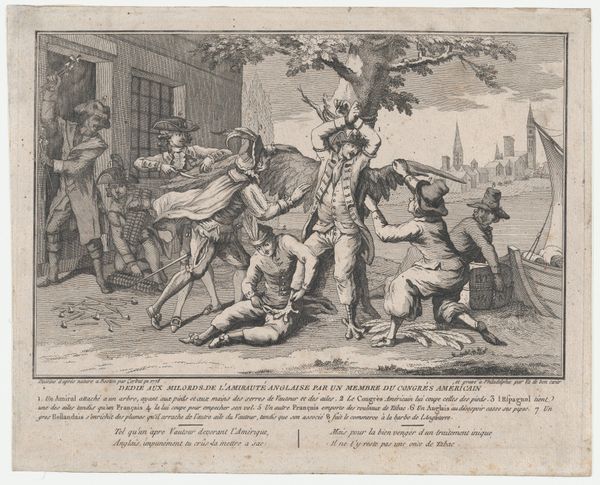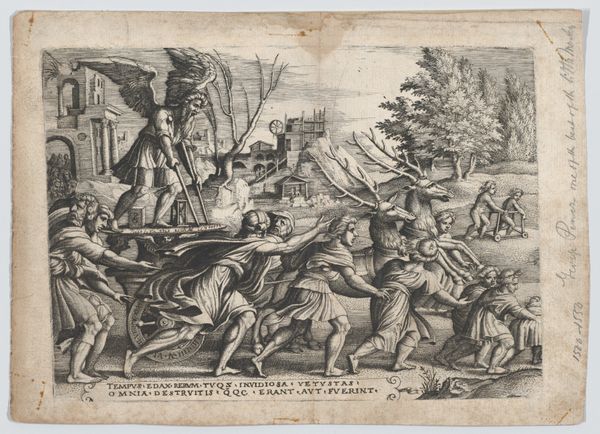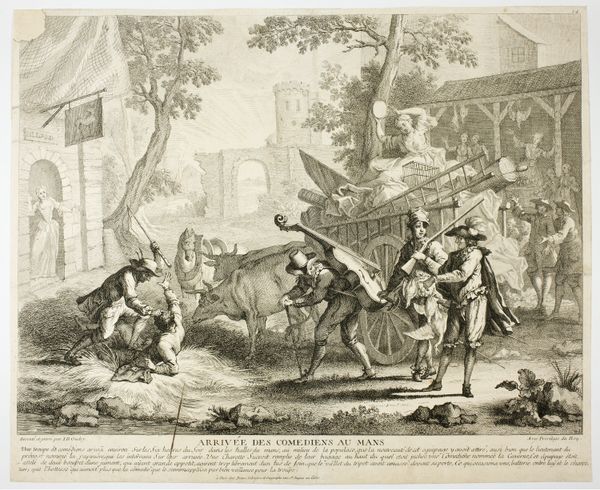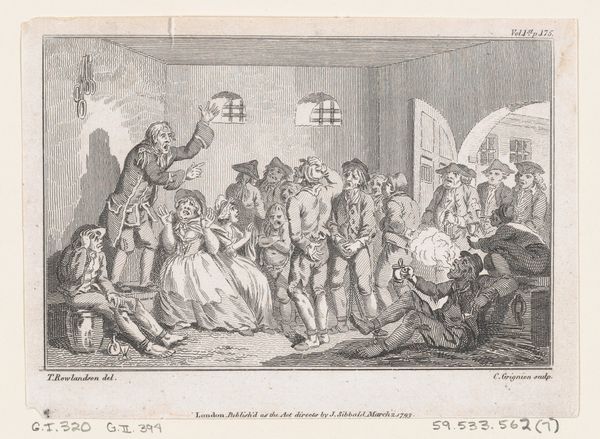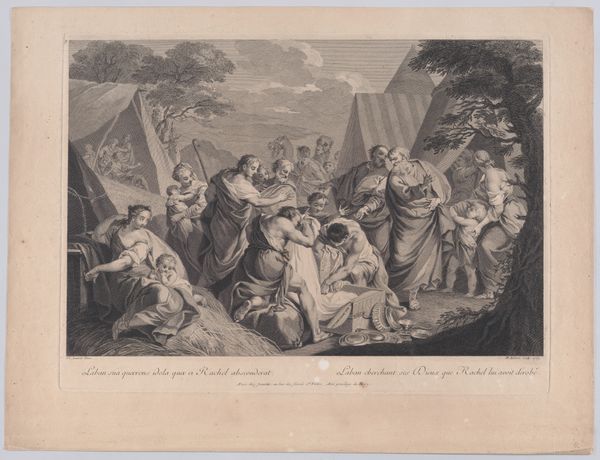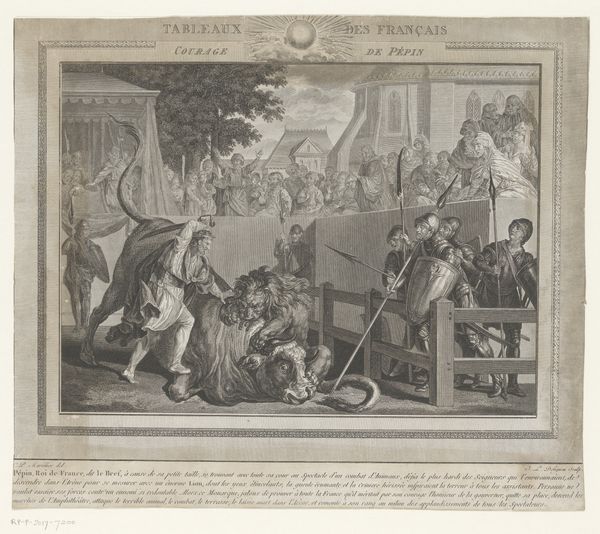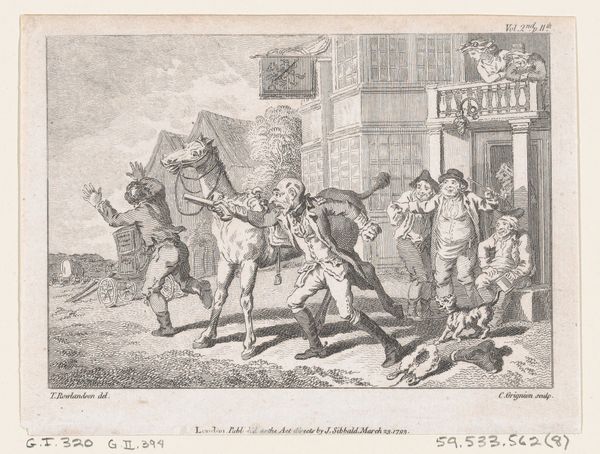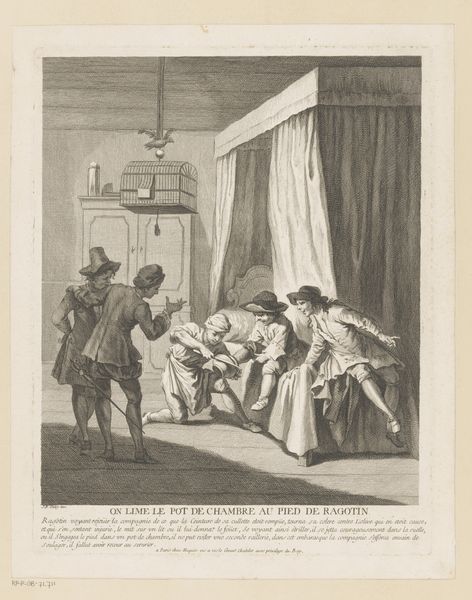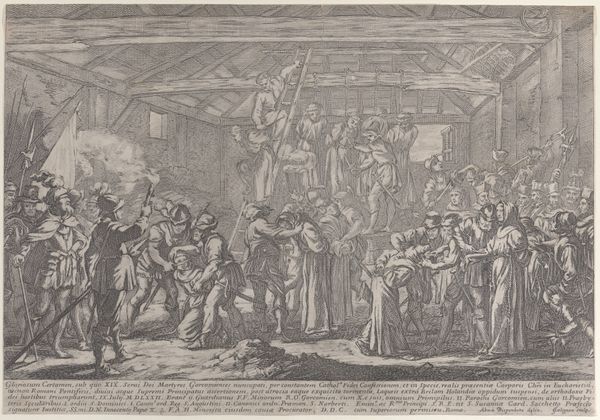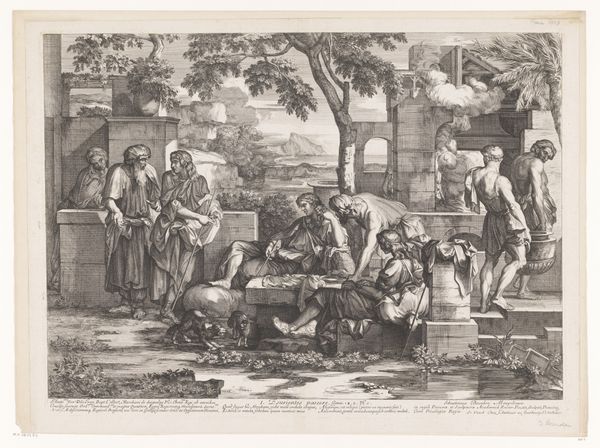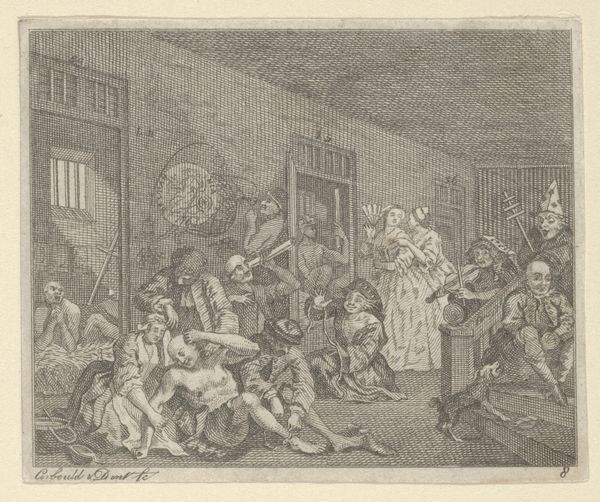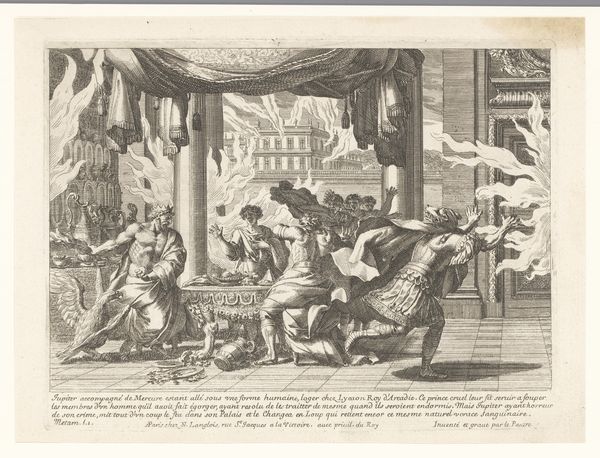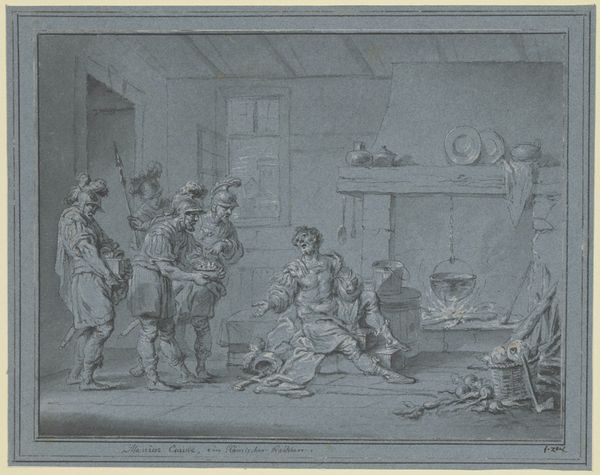
Va de Bon Coeur; Dédié aux Milords de l'Amirauté Anglaise par un Membre de Congrès Américain 1778
0:00
0:00
Dimensions: plate: 6 3/8 x 12 1/2 in. (16.2 x 31.8 cm) sheet: 8 1/4 x 12 7/8 in. (20.9 x 32.7 cm)
Copyright: Public Domain
Curator: This etching, entitled "Va de Bon Coeur; Dédié aux Milords de l'Amirauté Anglaise par un Membre du Congrès Américain," was created around 1778 by Richard Purcell. It's currently part of the collection at the Metropolitan Museum of Art. What’s your immediate reaction? Editor: It feels chaotic, like a visual representation of colonial tensions at a breaking point. There's a lot of activity, but it feels forced, almost desperate. And what a title! Curator: Precisely! Examining the print's materiality as an etching/engraving, and the historical context it was born from, it really comes alive. The medium of print allowed for wider circulation, functioning as propaganda during the American Revolution. Notice how different nations—French, Spanish, Dutch—are depicted actively stripping the symbolic American Vulture. Editor: Absolutely. This piece offers an incredibly rich perspective into the late 18th-century political climate. "Va de Bon Coeur"—Go with Good Heart—is dripping with irony when coupled with this visual narrative of exploitation. Curator: You can see that through its materials too, it implicates British naval strategy of that era. Consider the material qualities of this piece alongside its content and creation - it’s both anti-British and meant to be broadly consumed. A potent combination for revolutionary sentiments. Editor: Definitely. The print shows us that it is not just about the American Revolution but speaks to the exploitation inherent in colonial power dynamics. We see the various European powers eagerly taking their pound of flesh while the British are depicted as blind to the consequences. Curator: Exactly. There is labor that goes into production for these engravings; how many hands reproduced it, and where did these prints end up? What locations consumed it and, eventually, influenced political action? Editor: Thinking about this imagery now, it compels a reflection on the continued global impact of colonialism and resource extraction on present-day power structures. How do these echoes reverberate, what actions persist? Curator: So, a closer look reveals that it serves not only as a political critique but as a lasting record of a pivotal moment in history, etched through process into material culture for distribution and discussion. Editor: Yes, seeing this engraving pulls together so many threads.
Comments
No comments
Be the first to comment and join the conversation on the ultimate creative platform.
